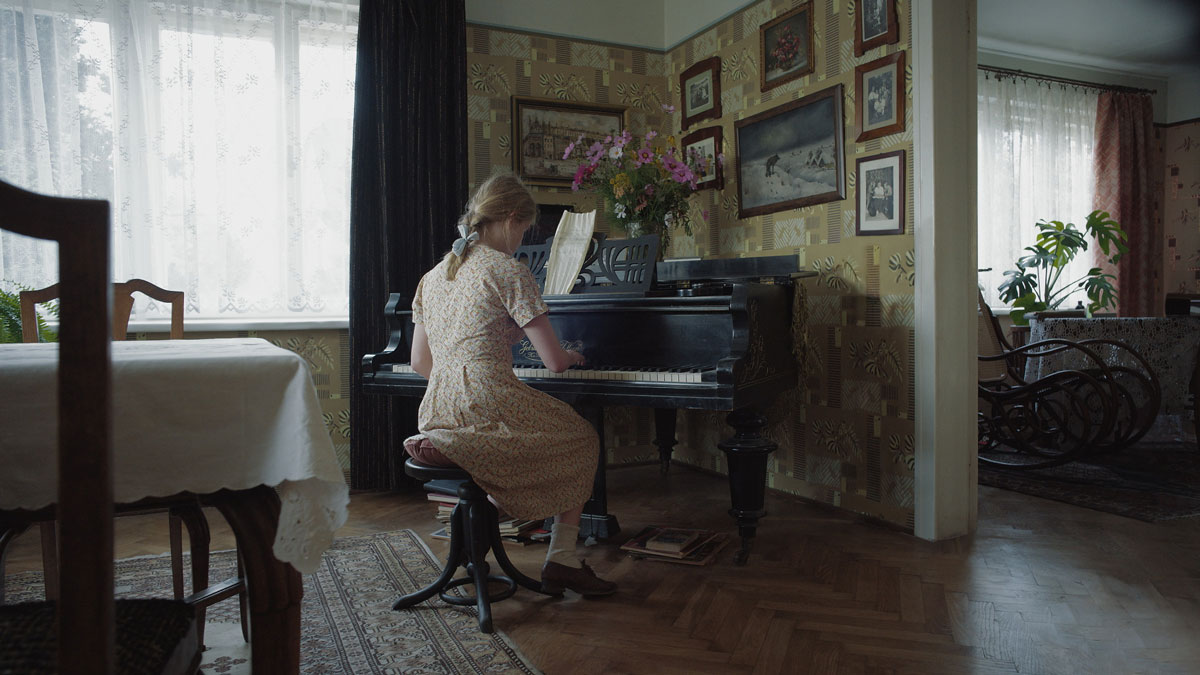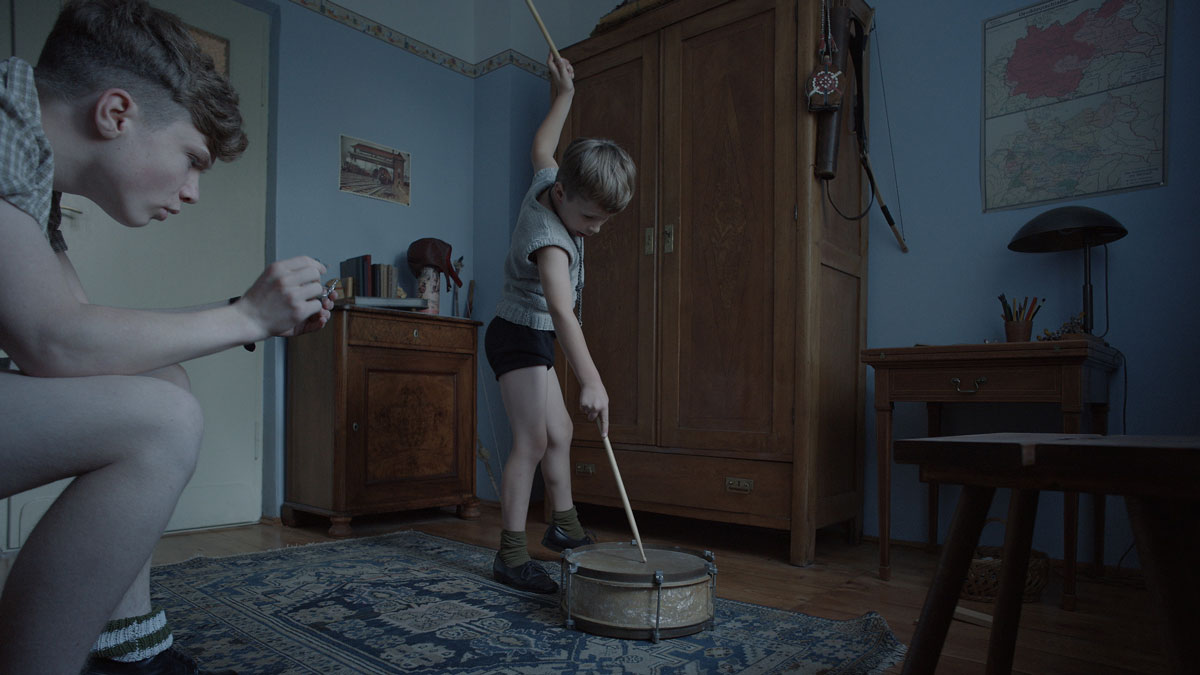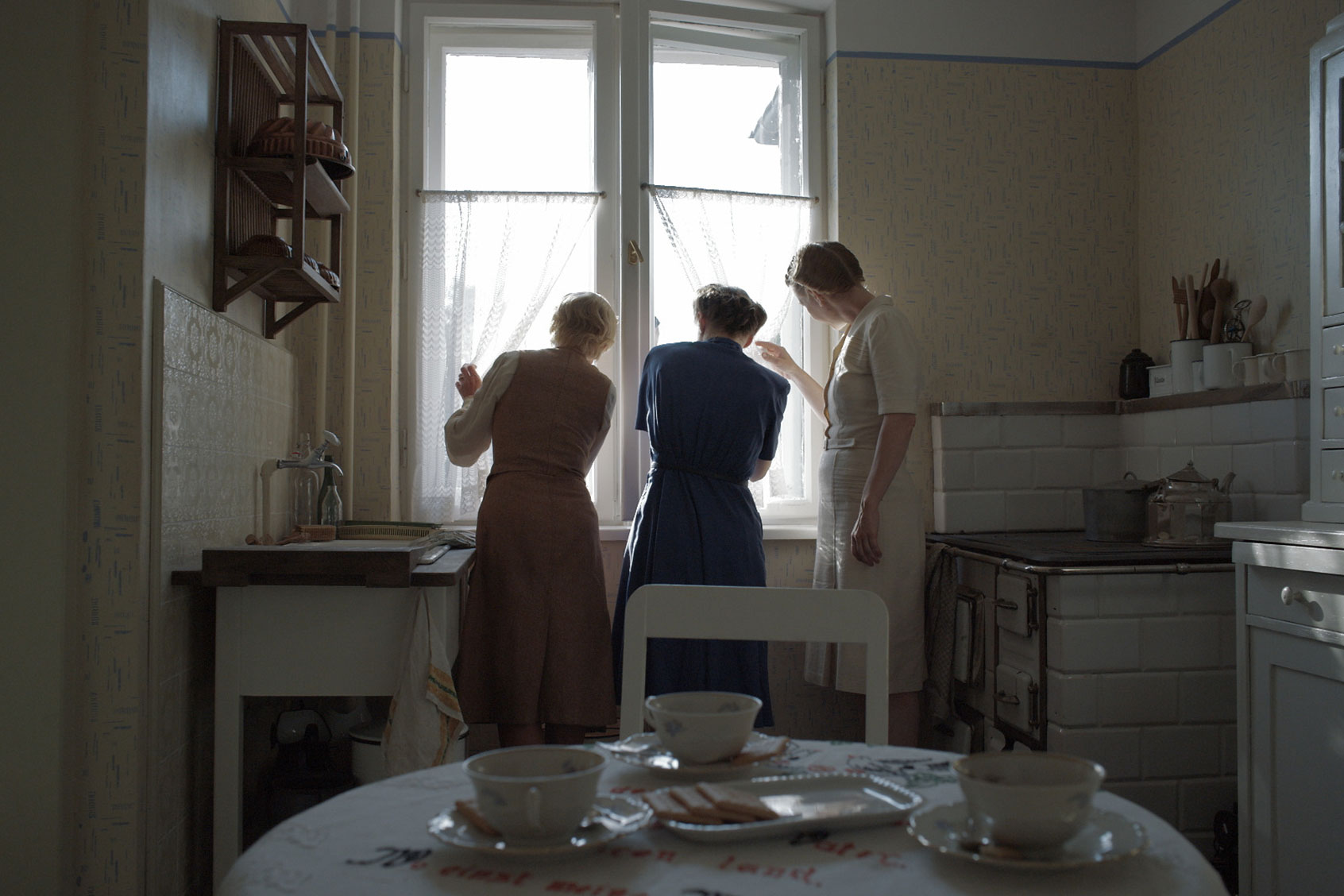“The Zone of Interest,” based on the late Martin Amis’ novel, is a mesmerizing cinematic experience. The film, directed by Jonathan Glazer, charts the banality of evil as Auschwitz commandant Rudolf Höss (Christian Friedel) and his wife Hedwig (Sandra Hüller, from “Anatomy of a Fall”) live with their children in a house situated across from a concentration camp. Their lives are peppered by the sounds of gunfire and the crematoria, with people screaming and dogs barking. This only magnifies the horrors of what is happening. There are also cringe-inducing scenes of Hedwig trying on a fur coat or passing out clothes that Rudi brings home from work to the servants.
"The credibility of the sound you use is so important because you can fool the eye much more easily than you can the ear."
Johnnie Burn is the film’s sound designer and just received an Oscar nomination for his work on “The Zone of Interest.” (Technically, he is the supervising sound editor and re-recording mixer.) He explains, “[I'm] the guy who is in charge of the entire process of how the sound is captured for the movie, and how the sound is used throughout the movie to explore the narrative and emotional potential of the use of sound — even down to the way the sound is presented to you in the theater, the physicality of that. I’m a filmmaker who has to think like a director with a sound hat on.”
“The Zone of Interest” uses sound very astutely to create emotion, most notably in an infrared sequence featuring a young girl placing apples for prisoners, or when Joseph Wulf’s text “Sunbeam” is read in voiceover. Likewise, an episode late in the film, as cleaners prepare a space in a Holocaust Museum is also very powerful.
Burn, who also did the sound design for “Poor Things,” spoke with Salon about his work and “The Zone of Interest.”
Much of the sound is non-diegetic; the sound is heard, but what makes the sound is not seen on the screen at that time. This approach prompts us to visualize what is happening. Does that make your work easier or more difficult?
The first thing that happens in “The Zone of Interest” is that you are plunged into darkness, and you listen for three-and-a-half minutes. The overture says, “Use your ears.” It also settles you into the cinema for the experience you are going to have. What Jonathan [Glazer] and I want to do throughout the film is draw upon the mental imagery that people are familiar with in order to populate their mind with images that are more interesting than anything that Jonathan could have filmed, because it’s personal to you.
Do you think the large absence of seeing the murder of Jewish people, and hearing it only through sound, might play into the hands of Holocaust deniers? There are images of discarded clothes and shoes in the film, so we are aware of what is happening. We are seeing a different perspective of a Holocaust film. But, because we are not seeing what happens, people can say it didn’t!
I suppose. I never thought that. The way I approached it was entirely factual, and scientific in the use of sound and how it was heard in that space. The execution block was 150 yards away, and there was usually a volley of six shots. They [killed] 80-90 people a day during this period. That would have certainly been heard from this house. I would hope that young people who are unaware of the images because they have not been exposed to that yet, would seek it out and find the truth. Perhaps there will always be Holocaust deniers, but the important thing is to raise this subject and allow people to make what they want out of it.
Can you talk about finding the sounds and creating them? Birds, dogs barking, crying babies, screams and gunfire. How do you match the sounds that are being heard to match a visual that are being seen when viewers do not hear what they see?
Jonathan and I described it as there being two films, one that you see and one that you hear. You see a family drama, with all the banality of that and the mundanity of their daily routines, and there was a lot of sound that had to be made in the normal way that we make sound for film — replacing people’s footsteps, because on set, they want it to be quiet. But the majority of the sound that is doing the heavy lifting is the result of year’s research and creation and sourcing. The bulk of the sounds that you hear that have emotional impact are all sounds I have repurposed from the real world. I found trying to get actors to recreate these scenarios and re-enact anything from scenarios I read about in my research and from witness testimony, is definitely the wrong way to go about it. To find sources of real sound of people in pain is convincing, and the credibility of the sound you use is so important because you can fool the eye much more easily than you can the ear.
There are moments of tranquility and silence — several scenes feature Hedwig in her garden — but they are often accompanied by a low-throbbing hum of the crematoria, trains or even screams. It makes you parse out what you are hearing and what you are seeing, a beautiful flower with an unsettling noise in the background. I love how my brain works when the sound does not match the image.
The constant juxtaposition is extraordinary. You watch it and you think, I can shut my eyes but not my ears, because if I can hear that, why can’t you? There is the constant rumble of the camp and the “machine of death,” as we called it. The crematoria, but also the other machines that were used, the textile machines, and the armor manufacturing they would do, and the footsteps of the people and the soil of the place. There is an almost abstract quality to the sound that is supposedly “in camera,” but part of the point of that is to not sensationalize the use of sound when possible. That constant drone is a very good shorthand for a lot of other sounds that were in previous versions of the film, but we found to be too much. The process takes a year and half of post-production. We are creating a feeling in the viewer, and when you feel you achieve that, you remove as much of the scaffolding of that feeling, and still keep the main ingredient. That is the process of finding “what is too much.”
 The Zone of Interest (A24)Can you describe an example that illustrates that concept?
The Zone of Interest (A24)Can you describe an example that illustrates that concept?
"It was like creating a radio play acoustically outside the window."
When young Hans (Luis Noah Witte) is playing in a room and he hears a furor outside the window, and he goes to window, and it is actually his father remonstrating and then murdering a prisoner. The shot that was actually filmed was just a boy playing in his room. He happened to stand by window at that point. We saw that as an opportunity to create a story that harked back to the infrared footage [in the film] of a girl placing apples at night. That, in itself, was a true story; Jonathan met the woman who was 93 years old, and has, sadly, passed away since filming. She told Jonathan that she would hide apples, and he put that in the film. We wanted to make a link to that, and we decided the way to do that was to write a mini-script of a scene that happens outside the window. We got Rudi and placed him physically on a horse — even though we were only recording sound — because it affects the way the diaphragm works when people speak. This film is [like a] documentary in the way it presents that anything less than exactly the real thing, we found stuck out like a sore thumb. It was like creating a radio play acoustically outside the window. Then once we had done that, and found we overelaborated with the amount of pain from a prisoner or felt it was sensationalized, we then removed anything extraneous from the short story we were trying to reproduce. That became a shorthand for what did throughout the film. Taking things out because we didn’t want lilies to be gilded.
Let’s talk about the infrared scenes. The sound is very critical in these scenes as well. Can you talk about that? They have a dreamlike feel to them.
There is a scene where you see the young girl find a piece of music and play that on the piano in her apartment. Those sequences strike me as alien to the world of the film, and that goes to explaining the way we wanted that to present as an entirely different feel. Previous to that, the entire film is composed of mid-shots, where you see the whole head and feet of more than one person, and this is the only time where you are ever in close on anybody and the only time from a sound point of view where you are in her perspective. We wanted that section to pop because something very different is happening there.
Was the house a real location or a built set? Footprints are strong, doors creak. There is a sterility and a discomfort there that is palpable. One scene you can almost smell what Hedwig’s mother (Imogen Kogge) does when she gets up to close a window. How did you work with the sound in the home?
Normally on a film set the primary goal is to record the actors’ dialogue and everything else is secondary and usually negated. The process of making the sound in a film is to put the dialogue back in and then go do foley where you recreate the footsteps or record the background of a bird [chirping]. What we aimed to do here, and what Jonathan is keen on, is realism. The set we built was actually a house that was in the next plot of land over from the actual house, which couldn’t be used for various reasons. But it was still on the grounds of the zone of interest. The build was physically correct. The walls were solid; if you banged them, you would hurt your fingers. Footsteps were correct. Normally, a film set would have a concrete floor, that would look concrete but be rubber so that no one gets in the way of the words being said.
Here, we were doing something very different, Observationally, it was: let’s hear these people in this house. I don’t mind if we don’t hear the words so often. So rather than do the normal thing of having actors with microphones hidden in their clothing or their wig, here we made the film with 10 cameras hidden around the house and no crew members, and 20 mics hidden in the ceiling to have actors feel they were in 1943. A take would be about an hour long because that was the length of the memory stick in the cameras. The actors did not have to feel they were performing to a particular camera. They just had to be in the house, and say their lines, occasionally. Simultaneous scenes were happening. When Rudi is talking to industrialists about a new crematoria plan, Hedwig really was in the kitchen, and Elfryda (Medusa Knopf) really was walking around with the baby that really was crying, and the boy really was upstairs drumming. Normally, you would not put all those things in at the same time, but we had the control from the different recordings to greatly enhances the immersion for the viewer and the feeling of really being in a living house, which creates the juxtaposition on which the whole film sets. We could make it such that we did hear the dog and baby. The film had an unnatural, multiple layers of additional sound going on in the house before even getting into all the stuff coming in from over the wall.
 The Zone of Interest (A24)You also did the sound for “Poor Things.”
The Zone of Interest (A24)You also did the sound for “Poor Things.”
"That could be me, and there is violence in all of us."
Jonathan likes to work together, and we do it for a year and half for a few hours a day. Yorgis [Lanthimos, director of “Poor Things”] is absolute the opposite. He says, “You are the sound guy, you do the sound.” We were starting the sound process on “The Killing of a Sacred Deer” after “The Lobster,” and he said, “I’ve just been greenlit for ‘The Favorite,’ so I’m going to have to leave and you are going to have to finish the film on your own.” The first time he heard the [sound] mix was at the Cannes Film Festival premiere. Through that, he gained confidence that he can delegate and be more prolific. For me, I had spent a lifetime asking a director, “Here are chicken, beef or fish, what would you like?” and he forced to think like a film director rather than a sound guy and make the single choice that becomes obvious when you have to make a decision. It is a very different approach. It sharpened my mind to say, “This is the way we should go,” because I understand filmmaking better now.
Want a daily wrap-up of all the news and commentary Salon has to offer? Subscribe to our morning newsletter, Crash Course.
What can you say about the tone of ["The Zone of Interest"]? It is severe, and it could be either celebratory or ironic. There is a sterility to it.
It is certainly bleak in many ways. My take is that could be me, and there is violence in all of us. And we should guard against that. Without the sounds coming from over the wall, it is a nice family drama. I saw that movie before we finished working on it. [Laughs nervously.] The tone is thought-provoking. It is coming from a warmly intended place of let’s all reflect on this.
"The Zone of Interest" is currently in select theaters.
Read more
exploring the Holocaust onscreen

